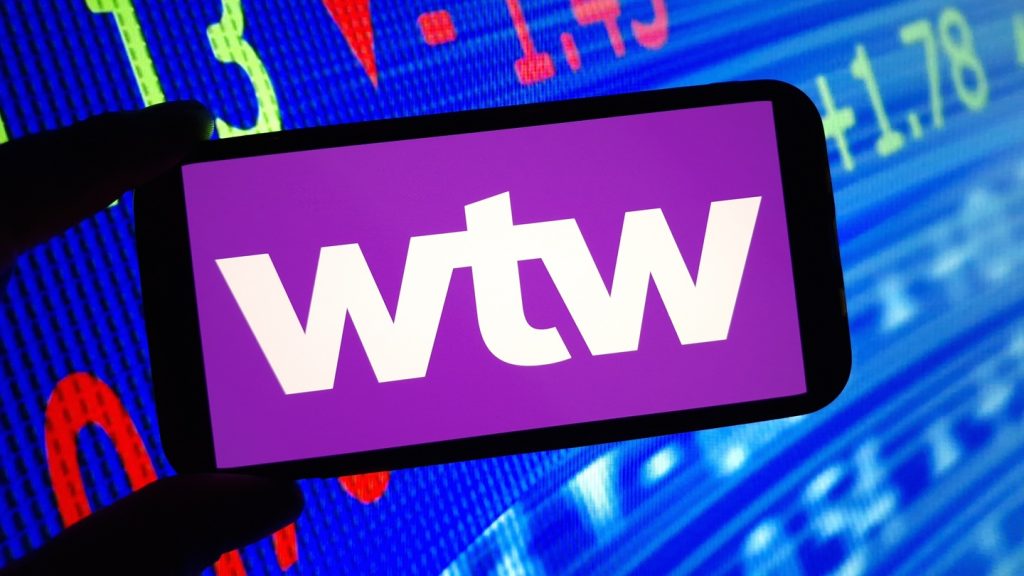Despite facing investment market headwinds
during 2011, pension fund assets in the world’s 13 largest pension
markets clawed their way to a record high by year-end, reveals a
study by professional services group Towers Watson.
Towers Watson estimates total pension assets
in the 1 markets increased by 3.8%, taking them from $26.5trn in
2010 to $27.51trn in 2011, continuing an upward trend that began
with a recovery in 2009 when assets grew by 17%. The 2009 increase
followed a 21% decline recorded in 2008 that saw assets slump back
to the 2006 level.

Access deeper industry intelligence
Experience unmatched clarity with a single platform that combines unique data, AI, and human expertise.
The increase in 2011 took the annual CAGR in
pension assets since 2001, when they stood at $14.8trn, to 6.2%.
Across the 13 countries covered by the study, Japan, the world’s
second-largest pension market, was the only one to record a
negative CAGR in pension assets in local currency terms between
2001 and 2011. Japan’s CAGR came in at -1% with low CAGR also
recorded by France (1%), Switzerland (4%) and Ireland (4%).
Over the 10-year period, the highest CAGRs in
local currency terms were recorded by Brazil (14.3%), South Africa
(12.5%), Hong Kong (10.3%) and Australia (9.2%). The world’s
largest pensions market, the US, recorded a 5.2% CAGR while the
world’s third-largest market, the UK, recorded a 7.9% CAGR.
Negatives
It was not all positive news in 2011. Relative
to global GDP total pension assets fell from 76% in 2010 to 72% in
2011, though this was still up on the low point reached in 2008
when total assets stood at 61% of global GDP. Making up the average
in 2011 were huge variations, from a low of only 5% of GDP in
France to a high of 133% in the Netherlands.

US Tariffs are shifting - will you react or anticipate?
Don’t let policy changes catch you off guard. Stay proactive with real-time data and expert analysis.
By GlobalDataAlso of note, the overall negative trend in
defined benefit (DB) pension asset growth vs DB liability growth
resumed in 2011 after a two-year respite. Using 1998 as the base
year, Towers Watson estimates that liabilities at the end of 2011
were up 107.3% compared with 1998 while assets had grown by only
54.7% over the 13-year period. At the end of 2010, liabilities were
an estimated 93.3% higher than they were in 1998, while assets had
increased by an estimated 50.7%.
Notably, the long-term trend away from DB
pension funds to defined contribution (DC) pension funds halted in
2011.
In the seven largest markets (US, Japan, UK,
Canada, Australia, the Netherlands and Switzerland), DB fund assets
stood at 57% of total assets at the end of 2011, up from 56% at the
end of 2010. However, since 2001, DB fund assets have declined from
62% of the total.

The markets that have a larger proportion of
DC assets than DB assets are the US (57% DC), Australia (81% DC)
and Switzerland (60% DC), while Japan and Canada are still close to
being completely DB. Towers Watson notes that the Netherlands,
which historically only had DB funds, is now showing signs of a
shift towards DC, having grown DC assets by 6 percentage points in
the past five years to reach 7% of total assets.
Equity loses favour
In the seven largest markets, pension markets
equity has lost favour as an asset class over the past decade.
Unsurprisingly, the decline in equity’s
popularity has been most marked since the onset of the global
financial crisis in 2008.
For example, in the US, Towers Watson
estimates that asset allocation to equity fell from 65% of total
assets in 2001 to 61% in 2005, 49% in 2010 and 44% in 2011.
Similarly, in the UK, equity fell from 67% of total assets in 2001
to 66% in 2005, 55% in 2010 and 45% in 2011.
The highest exposure to equity in 2011 was in
Australia where it stood at 50% of assets, up from 49% in 2010 but
still well down on 62% in 2001 and 56% in 2005. The lowest
allocation of assets to equity in 2011 was in the Netherlands and
Switzerland at 27% each, followed by Japan at 31%.
Bonds came more into favour in 2011 with asset
allocation to bonds reflecting a fairly sharp increase, rising on
average in the seven largest markets from 33% of total assets in
2010 to 37%. This was up from a recent low of 24% in 2005. The
highest allocation to bonds in 2011 was in Japan where it stood at
59% of assets. The Netherlands was close behind with 58% of assets
allocated to bonds.
In terms of asset allocation, Towers Watson
notes that gaining most ground over the past 10 years have been
alternative assets, especially property and to a lesser extent
hedge funds, private equity and commodities.

Across the seven largest pension markets the
allocation of assets to alternate assets increased from 7% in 2000
to 15% in 2005 and to 20% in 2011. Towers Watson’s data show that
the biggest increases in allocation to alternative assets between
2001 and 2011 have been in the US (from 5% to 25%), Switzerland (9%
to 28%), the Netherlands (1% to 14%), Australia (14% to 24%) and
Canada (10% to 20%).
Asset allocation
Commenting on asset allocation, Towers
Watson’s global head of investment Carl Hess emphasised that market
volatility and heightened risk awareness associated with possible
sovereign debt defaults makes asset allocation “incredibly
challenging”. On coping with turbulent markets and uncertainty,
Hess noted that pension funds’ risk management processes have in
recent years “evolved somewhat”.
Expanding on what is clearly not an altogether
satisfactory picture, he added: “There is still some way to go
before the appropriate measurement and management of risk is firmly
embedded in the governance structures of most pension funds.”







